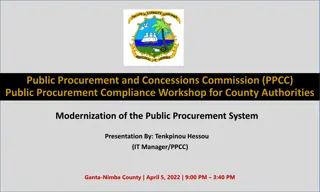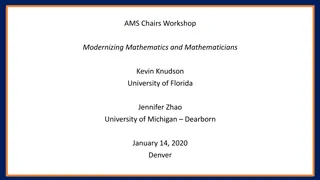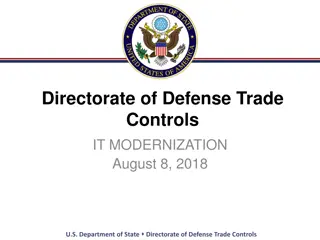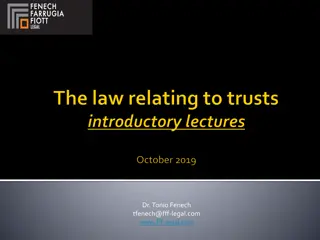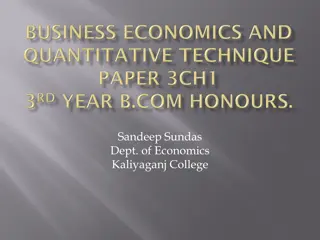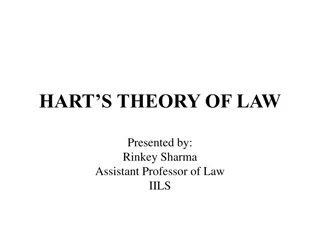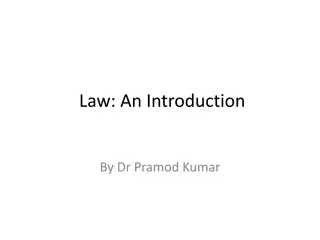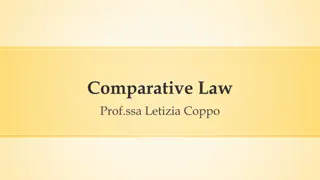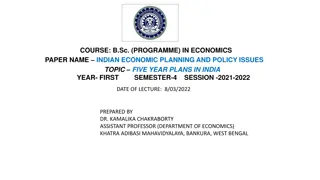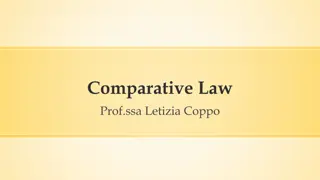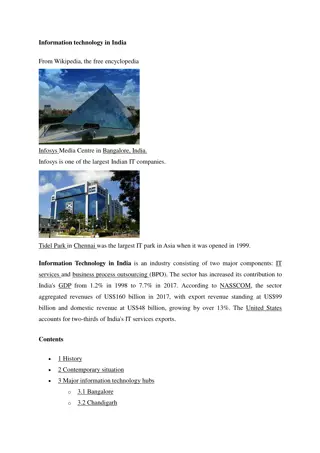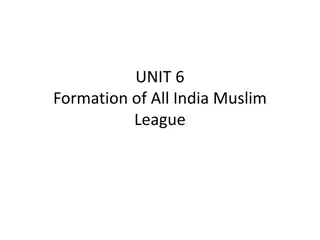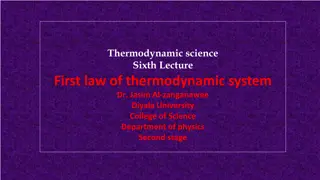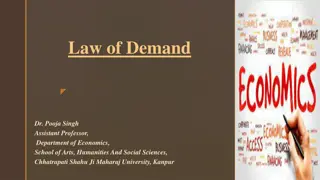Modernization and Law: Impact of Live-in Relationship in India
Law plays a crucial role in social transformation, with a close interconnection between law and society. Recognizing the significance of live-in relationships, the legal system in India has adapted to provide some form of legal recognition and protection for individuals in such relationships. This evolution reflects the dynamic nature of societal norms and values, influenced by changing perspectives on relationships and family structures.
Download Presentation

Please find below an Image/Link to download the presentation.
The content on the website is provided AS IS for your information and personal use only. It may not be sold, licensed, or shared on other websites without obtaining consent from the author. Download presentation by click this link. If you encounter any issues during the download, it is possible that the publisher has removed the file from their server.
E N D
Presentation Transcript
LL.M. SEMESTER II COURSE CODE : 201c COURSE TITLE : LAW AND SOCIAL TRANSFORMATION IN INDIA UNIT IV : MODERNIZATION AND THE LAW 4.3 MODERNIZATION OF SOCIAL INSTITUTIONS THROUGH LAW 4.3.1 FAMILY LAW REFORMS : LIVE-IN RELATIONSHIP IN INDIA Presented by Dr. Sangeeta Chatterjee Assistant Professor Department of Law, Bankura University
INTRODUCTION Roscoe Pound, the propounder of Social Engineering Theory has clearly declared that, the function of law is nothing but to serve the society. Truly speaking, law and society have a close nexus between themselves and one cannot be imagined without the other. Primary function of law is to serve the society. Only law has the power to establish peace and tranquillity in the society.
LAW AND SOCIAL CHANGE Law always has the power to bring social change. On the contrary, social change brings legal change and an old law becomes obsolete in a new society. Therefore, there exists a cause and effect type of relationship between law and society, wherein change in one side always brings change in the other side. Owing to this contention, law is considered as an instrument of social change.
BACKDROP In this backdrop, a number of legal changes are found in Indian society, which have brought social transformation recognition of Live-in Relationship is one of such emerging trends in India. Since the year 2005, Supreme Court of India has tried to provide legal recognition to Live-in Relationship herein. It has provided interpretations to this term for the purpose of protecting interests of the parties engaged therein. in India. Legal many new
WHAT IS LIVE-IN RELATIONSHIP Live-in relationship refers to an arrangement whereby two people decide to live togetheron a long-term or permanent basis in an emotionally and/or relationship. The term is most frequently applied to couples who are not married but nevertheless live together as husband and wife . sexually intimate
TYPES OF LIVE-IN RELATIONSHIP INFORMED UN NO- INFORMED CHOICE LIVE-IN RELATIONSHIP RELUCTANT
STAGES OF PROCESS An unusual habit of a small minority A prelude to marriage Socially accepted as an alternative to marriage Indistinguishable from marriage in terms of commitment and parenting
HISTORICAL BACKGROUND IN INDIA Maitri Karar GandharvaVivah E.g. Dushyanta Shakuntala Bengal Sadar Courts in 1817
LEGAL DEFINITION OF LIVE-IN RELATIONSHIP D. Velusamy Vs D. Patchaiammal, AIR 2005 SC 1809 The Hon ble Supreme Court of India in this case has observed that the relationship which is in the nature of marriage will be only recognized under the concept of live in relation. The Court has opined that merely spending few weekends or one night stand would not make domestic relationship.
FOUR TESTS FOR VALIDITY OF LIVE-IN RELATIONSHIP D. Velusamy Vs D. Patchaiammal, AIR 2005 SC 1809 Legal age to marry Qualify toenter legal marriage Must be unmarried Voluntary cohabitation as being akin to spouses should be for considerable period of time
LIVE-IN RELATIONSHIP WHEN PERMISSIBLE S. Khushboo Vs Kanniammal, (2010) 5 SCC 600 The Apex Court said that there is no law which prohibits Live-in Relationship or Pre-marital Sex. It is a part of Right to Life and Personal Liberty of a man and woman and their living together without marriage is not an offence. But it is permissible only in unmarried major persons of heterogeneous sex. Otherwise it would amount toadultery.
INDIAN LAWS ON LIVE-IN RELATIONSHIP Section 114 of the Indian Evidence Act, 1872 Protection of Women from Domestic Violence Act, 2005 Dowry Prohibition Act, 1961 Maintenance under Hindu Marriage Act, 1955 Maintenance under Section 125 of Cr.P.C, 1973 Rights of children born out of live-in relationship
ADVANTAGES FOR FEMALES Freedom, convenience, no commitment, with no interference in personal activities specially for careeroriented women. Easy to enter and break out relationship without any formalities orcustomary rites. No need to spend huge money on marriage ceremony ordowry. Easy to enter another relationship, unlike marriages having stringentdivorce laws. Live-in partners do a lot more housework than married men.
DISADVANTAGES With no concept of husband and wife, the parties can abandon each other and promote adultery making women the ultimate sufferers. There is no specific law on maintenance, succession etc. The Hindu Marriage Act, 1955 gives legitimacy to every child of void or voidable marriage, but whatabout theotherpersonal laws. The reasonable time after which the parties will be treated as husband and wife is unclear. Live in relationship is individualistic unsuitable to typical Indian familyoriented conception.
SUGGESTIONS Concrete law is required on the issue. Rights of women in such relationships should be secured. Rights of children born out of such relationships should be protected. Rights and responsibilities involved therein should be clarified. The reasonable time limit after which parties in live-in relationship could be treated as husband and wife should be cleared. of parties
CONCLUSION Live-in professions, like entertainment, modeling and media. If relationships are becoming more cross- cultural, they are also more contractual now leading to more clear-cut expectations from each other. Few people opt for these relationships because they do not believe in marriage. Hence, this is practically has become a very feasible option for some couples. Finally, it not easy to establish this relationship as a countervailing factor to marriage in India. couples are largely found from
REFERENCE : 1. Dr. Krishna Pal Malik and Dr. Kaushik C. Raval, Law and Social Transformation in India, Allahabad Law Agency, Faridabad, 4thEdition, 2017. 2. Dr. Bimal N. Patel, Dr. Mamata Biswal and Dr. Anand Kumar Tripathi (eds.), Live-In-Relationship and Surrogacy : Legal Implications and Social Issues, Gujarat National Law University, Gujarat, 1stEdition, 2012.
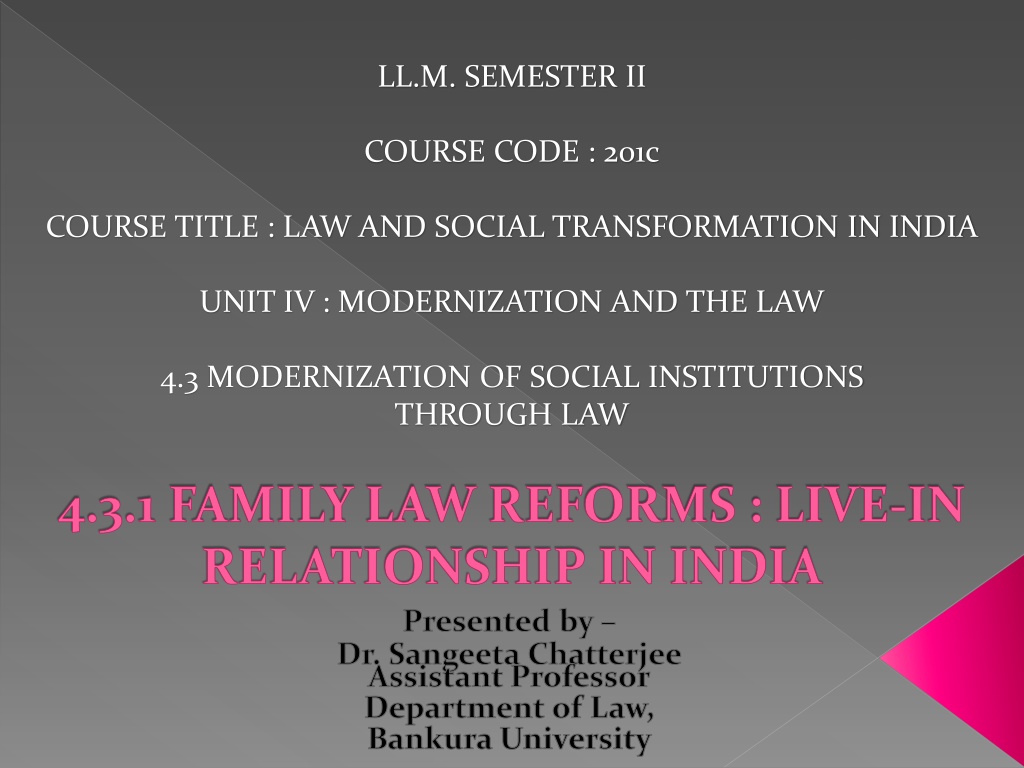



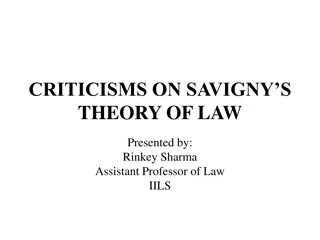

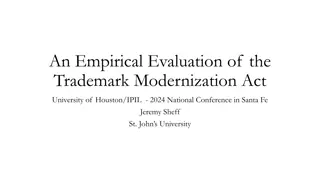

![Explore the Exciting World of Live Music Through [Insert Town/City] Census!](/thumb/148894/explore-the-exciting-world-of-live-music-through-insert-town-city-census.jpg)





